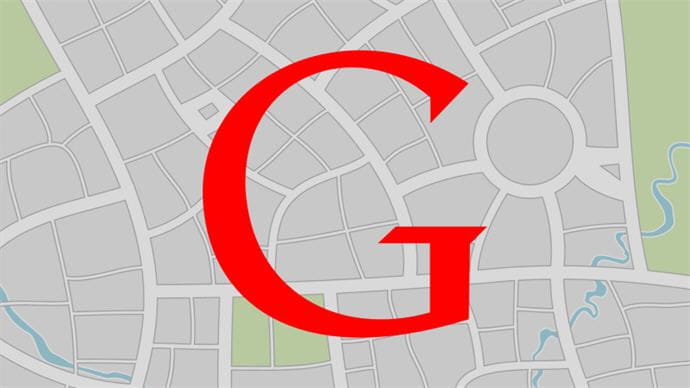
Dec 20, 2014
Industry information
0
Does a high website bounce rate prove that the website quality is not good? the answer is negative. Depending on the nature of the website, there are many situations where the bounce rate is high. Let Jiexin Network Marketing Agency teach you how to analyze and deal with the situation of high bounce rate of the website.
Is it bad that a website has a high bounce rate? This point depends on the specific situation. In this article, we'll look at bounce rate in conjunction with other factors to help you identify undesirably high bounce rates.
Google Panda UpdateOne positive effect of this is that more and more people are paying attention to the overall quality of content on their sites, removing low-quality, low-engagement, low-value pages. This is an annual content audit that I've been advocating for a long time.
First, the theory: is a high bounce rate bad? When is a high bounce rate not something you should worry about?
Although each algorithm has a slightly different technical definition of bounce rate, the essence remains the same: a bounce means someone comes to a website, views a page, and then leaves. However, it would be naive to think that websites are bad based on this alone. Sometimes the page answers and solves the person's question, or provides information they were looking for. This page does its job well, so users don't have to look elsewhere. For example, aviation and government websites. As we all know, the SEO and site structure engineering on this type of website is huge, so there is a need for an FAQ page. Some of these pages have a bounce rate of 85%. However, clicks on the print button can be tracked via crazyegg. More than 45% of people who visited the page used the print function. From this, can you still say that this page is not functioning?
Here is a screenshot of analytics data for some pages with high bounce rates:
High bounce rate, long dwell time:

As can be seen from the figure above, the bounce rate of the screenshot part is very high. If you only pay attention to bounce rate, you may be listing these pages as low-quality content and plan to rewrite or delete them. However, what you really need to do is observe visitor dwell time. People spend more time on these pages—because they're reading them. This shows that these pages are valuable.
Please see another set of page data screenshots:
High bounce rate, low dwell time:

The bounce rates of the pages in the above screenshots are also high, but their visitor dwell time is very different from the previous set of data: people only stay on these pages for a short while. From the search engine point of view, this may be a bad signal, so these pages need to be updated, rewritten or deleted.
You may also see other factors such as advertising revenue or affiliate commissions. There may be instances where a page has a high bounce rate because people click on an ad or an affiliate link, both of which can potentially generate revenue for you. Before you make a choice (update or remove) content, you want to have a holistic review of the page, including its role in your website, not just its bounce rate.
The focus of this article:
1. Regularly conduct content audits on the website to identify pages with a high bounce rate.
2. Look at these pages for other factors like visitor dwell time, ad revenue, affiliate revenue, social bookmarking, printing, and more.
3. Prioritize attempts to rewrite, update, improve or promote these pages. This is usually the better choice in the long run.
4. Simply deleting pages that cannot be maintained is an outdated practice and cannot be recorded.
5. In some cases, you may want to place these pages in a place where crawlers cannot reach them. This makes sense when these pages are only valuable to the live user, but not from a search engine perspective. For example, outdated newsletters or outdated PDF files.
Is it bad that a website has a high bounce rate? This point depends on the specific situation. In this article, we'll look at bounce rate in conjunction with other factors to help you identify undesirably high bounce rates.
Google Panda UpdateOne positive effect of this is that more and more people are paying attention to the overall quality of content on their sites, removing low-quality, low-engagement, low-value pages. This is an annual content audit that I've been advocating for a long time.
First, the theory: is a high bounce rate bad? When is a high bounce rate not something you should worry about?
Although each algorithm has a slightly different technical definition of bounce rate, the essence remains the same: a bounce means someone comes to a website, views a page, and then leaves. However, it would be naive to think that websites are bad based on this alone. Sometimes the page answers and solves the person's question, or provides information they were looking for. This page does its job well, so users don't have to look elsewhere. For example, aviation and government websites. As we all know, the SEO and site structure engineering on this type of website is huge, so there is a need for an FAQ page. Some of these pages have a bounce rate of 85%. However, clicks on the print button can be tracked via crazyegg. More than 45% of people who visited the page used the print function. From this, can you still say that this page is not functioning?
Here is a screenshot of analytics data for some pages with high bounce rates:
High bounce rate, long dwell time:

As can be seen from the figure above, the bounce rate of the screenshot part is very high. If you only pay attention to bounce rate, you may be listing these pages as low-quality content and plan to rewrite or delete them. However, what you really need to do is observe visitor dwell time. People spend more time on these pages—because they're reading them. This shows that these pages are valuable.
Please see another set of page data screenshots:
High bounce rate, low dwell time:

The bounce rates of the pages in the above screenshots are also high, but their visitor dwell time is very different from the previous set of data: people only stay on these pages for a short while. From the search engine point of view, this may be a bad signal, so these pages need to be updated, rewritten or deleted.
You may also see other factors such as advertising revenue or affiliate commissions. There may be instances where a page has a high bounce rate because people click on an ad or an affiliate link, both of which can potentially generate revenue for you. Before you make a choice (update or remove) content, you want to have a holistic review of the page, including its role in your website, not just its bounce rate.
The focus of this article:
1. Regularly conduct content audits on the website to identify pages with a high bounce rate.
2. Look at these pages for other factors like visitor dwell time, ad revenue, affiliate revenue, social bookmarking, printing, and more.
3. Prioritize attempts to rewrite, update, improve or promote these pages. This is usually the better choice in the long run.
4. Simply deleting pages that cannot be maintained is an outdated practice and cannot be recorded.
5. In some cases, you may want to place these pages in a place where crawlers cannot reach them. This makes sense when these pages are only valuable to the live user, but not from a search engine perspective. For example, outdated newsletters or outdated PDF files.
News
Industry information
Back to List
